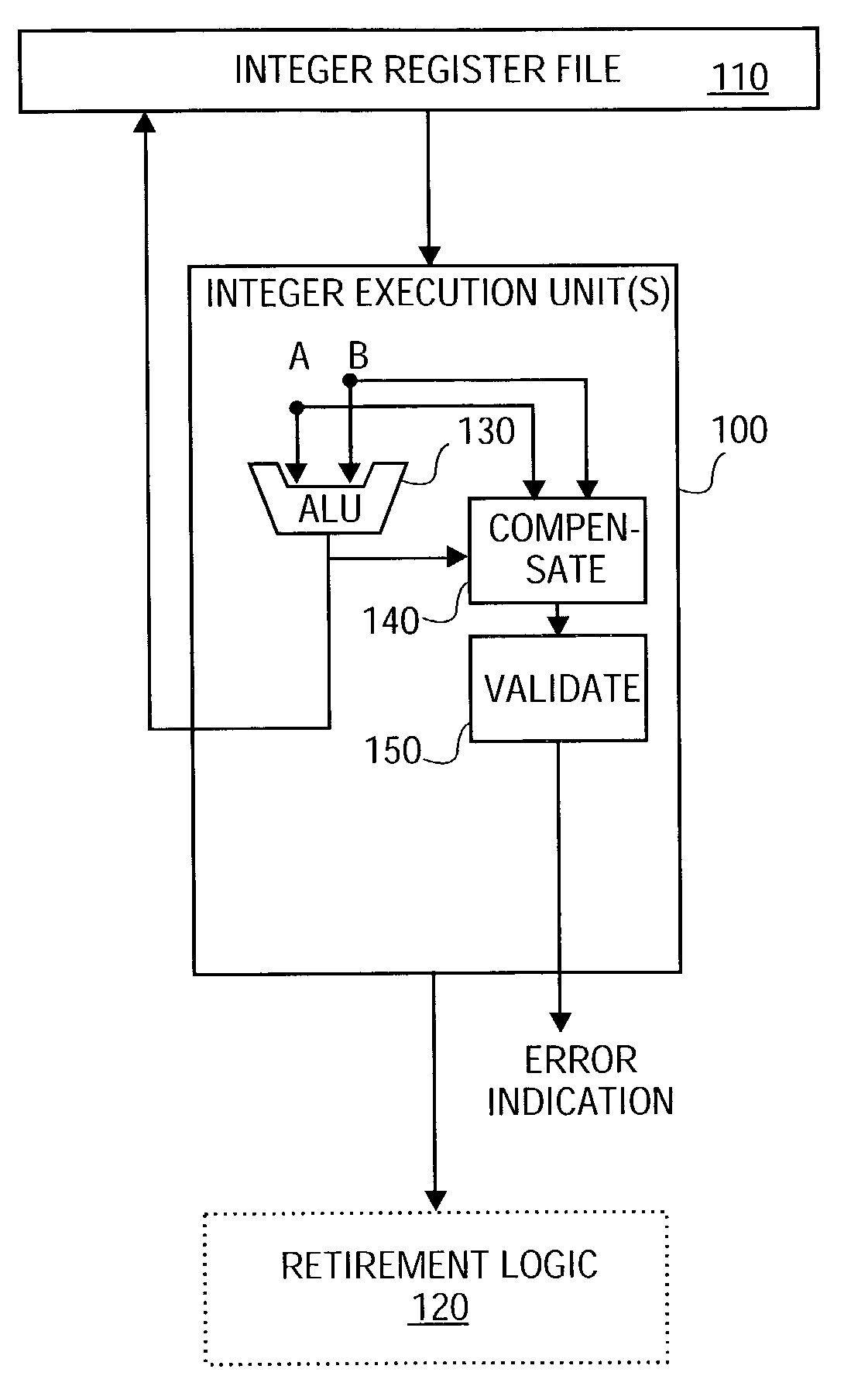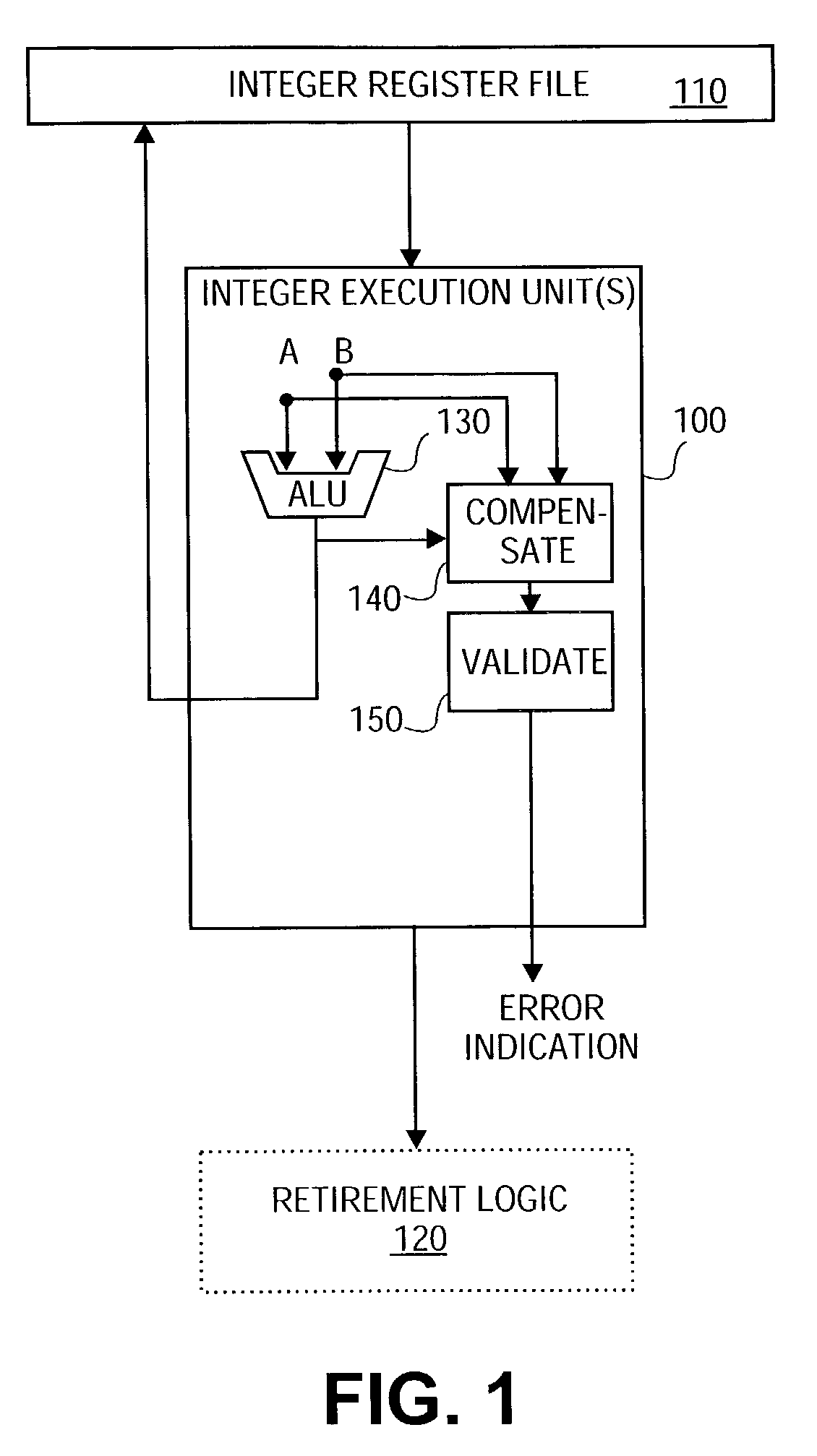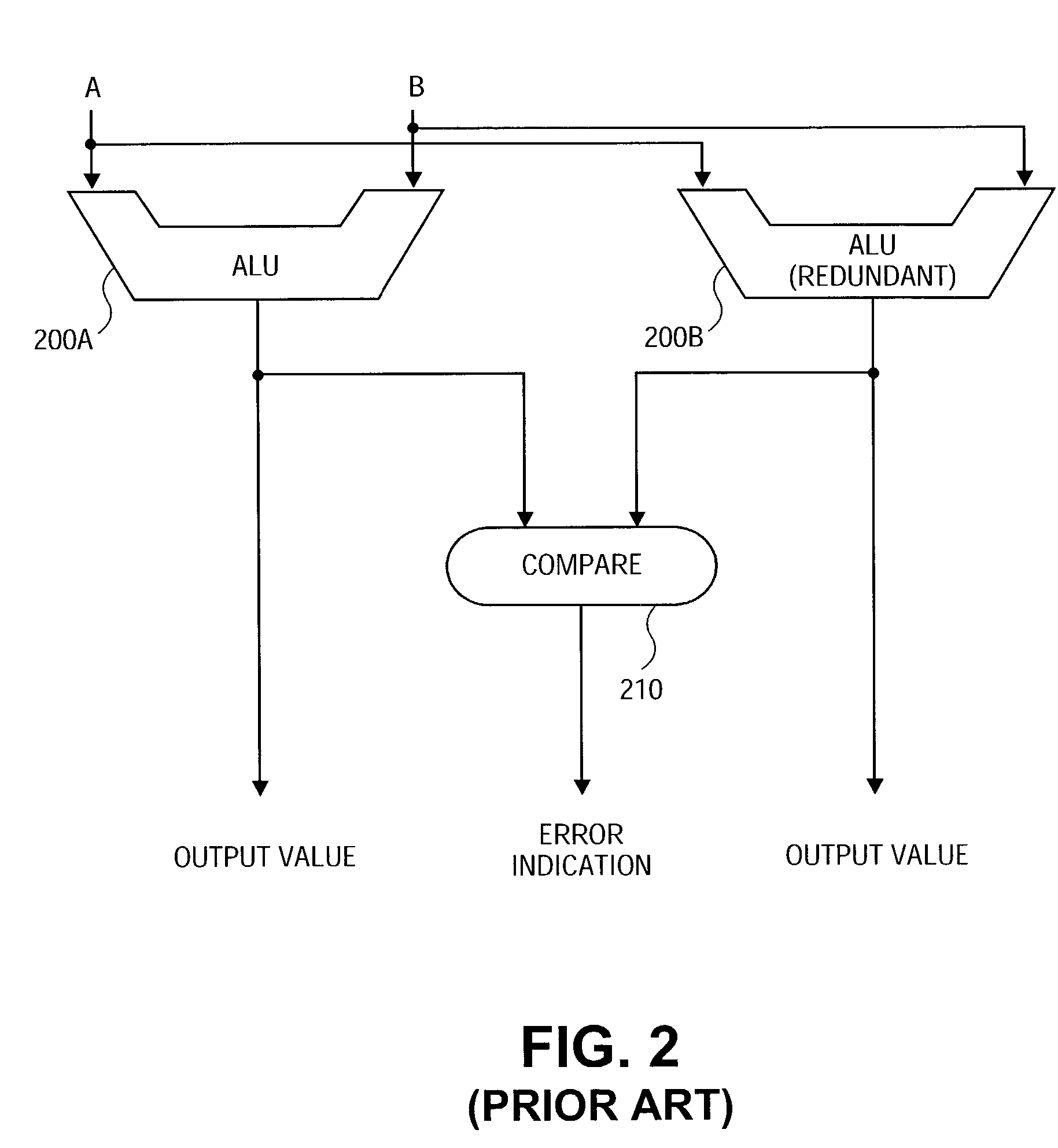Reduced-hardware soft error detection
a soft error detection and soft error technology, applied in error detection/correction, redundancy hardware error correction, instruments, etc., can solve problems such as soft errors, soft errors, and incorrect behavior
- Summary
- Abstract
- Description
- Claims
- Application Information
AI Technical Summary
Benefits of technology
Problems solved by technology
Method used
Image
Examples
Embodiment Construction
[0020]The following discussion sets forth numerous specific details to provide a thorough understanding of the invention. However, those of ordinary skill in the art, having the benefit of this disclosure, will appreciate that the invention may be practiced without these specific details. In addition, various well-known methods, procedures, components, and circuits have not been described in detail in order to focus attention on the features of the present invention.
[0021]The reduced-hardware soft error detection embodiments discussed herein may be used for both signed and unsigned integer representations. While much of the discussion below focuses, for purposes of example, on signed integers, one skilled in the art will recognize that either signed or unsigned integer representations may used in conjunction with the soft error detection embodiments described herein.
[0022]Regarding signed integers, processor architectures typically specify a format for storing signed integers. A com...
PUM
 Login to View More
Login to View More Abstract
Description
Claims
Application Information
 Login to View More
Login to View More - R&D
- Intellectual Property
- Life Sciences
- Materials
- Tech Scout
- Unparalleled Data Quality
- Higher Quality Content
- 60% Fewer Hallucinations
Browse by: Latest US Patents, China's latest patents, Technical Efficacy Thesaurus, Application Domain, Technology Topic, Popular Technical Reports.
© 2025 PatSnap. All rights reserved.Legal|Privacy policy|Modern Slavery Act Transparency Statement|Sitemap|About US| Contact US: help@patsnap.com



